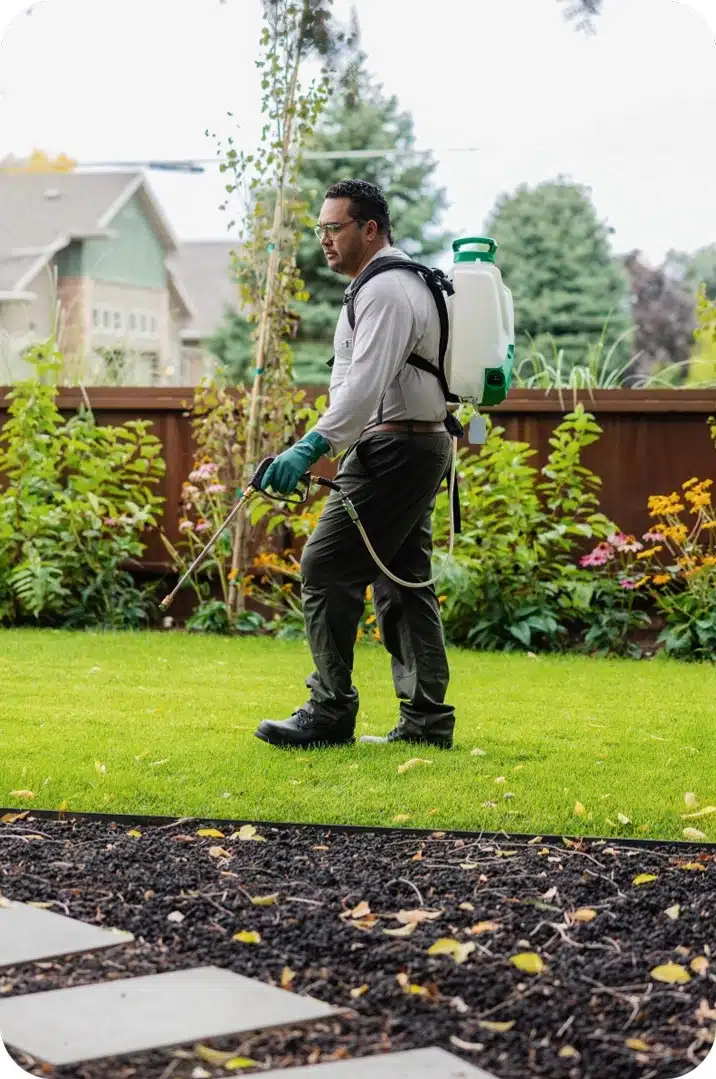A1 Charlotte Pest Control Companies - Your Neighborhood Pest Specialists
A1 Charlotte Pest Control Companies - Your Neighborhood Pest Specialists
Blog Article
Bed Bug Therapy Break Down: Contrasting Chemical Vs. Non-Chemical Solutions
In the world of insect control, specifically when dealing with the persistent concern of bed insects, the option between chemical and non-chemical treatment remedies can be an essential one. Both techniques supply distinct benefits and disadvantages, influencing variables such as performance, security factors to consider, and general cost. By checking out the nuanced details of each approach, a clearer understanding of which course to seek in dealing with a bed insect invasion can be attained.
Performance of Chemical Therapies
Chemical therapies for bed insect problems have actually been commonly identified for their quick and powerful efficiency in removing these pests. When taking into consideration the efficiency of chemical therapies, it is vital to understand that they can supply a detailed and fast remedy to a bed insect trouble.
Moreover, chemical treatments have the advantage of supplying recurring effects, meaning that they can proceed to get rid of bed pests also after the initial application. This recurring activity is particularly advantageous in combating any prospective re-infestations. Furthermore, the fast activity of chemical treatments can bring alleviation to individuals dealing with extreme bed insect invasions, allowing them to regain control of their space quickly.
Safety Worries With Chemical Solutions
One important aspect that calls for cautious factor to consider when using chemical remedies for bed pest therapy is making sure the security of residents and the atmosphere. Direct exposure to particular chemicals used in bed bug treatments can lead to respiratory system issues, skin irritability, or various other negative reactions, particularly in people with pre-existing problems or sensitivities.
Furthermore, the environmental effect of chemical options is an additional significant factor to consider. Some pesticides made use of in bed bug therapies may be damaging to valuable bugs, wildlife, and ecosystems if they seep into the soil or water systems. It is necessary to utilize chemical treatments carefully, adhering to safety standards, and taking into consideration less toxic options to alleviate these threats and ensure the efficient and secure administration of bed bug problems.
Advantages of Non-Chemical Approaches
Considering the prospective security worries and ecological effect linked with chemical services for bed bug treatment, exploring non-chemical approaches presents an appealing option with a number of distinct benefits. Non-chemical methods use a much safer choice for homes, especially those with kids, pet dogs, or people sensitive to harsh chemicals. These approaches remove the dangers of direct exposure to harmful substances, reducing the possibility for unfavorable health and wellness impacts. Additionally, non-chemical treatments are eco pleasant, as they do not add to air or water pollution, making them a lasting option for pest control.
Furthermore, non-chemical services can be reliable in targeting bed bugs, consisting of hard-to-reach areas where chemical therapies might not permeate. Methods such as warmth therapy, vacuuming, what is pest control vapor cleansing, and mattress coverings provide comprehensive obliteration without the use of hazardous chemicals. In addition, non-chemical methods can be much less turbulent, requiring very little prep work and allowing for quicker reentry right into dealt with locations. Overall, choosing non-chemical bed pest therapy methods not only focuses on safety and environmental management however also makes certain extensive and effective bug control.
Limitations of Non-Chemical Treatments

In addition, non-chemical therapies commonly call for numerous applications to attain successful removal. This can be taxing and might not constantly guarantee complete elimination of all bed pests and their eggs, specifically in hard-to-reach or surprise areas.
Furthermore, the success of non-chemical treatments heavily depends on appropriate execution and thoroughness, which can be testing for people without specialist knowledge. Insufficient application of non-chemical techniques may result in insufficient elimination, causing consistent invasions and the requirement for added therapies.
Consequently, while non-chemical therapies have their benefits, it is necessary to recognize these constraints and image source consider them when establishing one of the most reliable technique for handling bed pest invasions.
Expense Comparison: Chemical Vs. Non-Chemical Options
Provided the constraints associated with non-chemical treatments, an essential facet to examine in the context of bed pest management is the expense contrast in between chemical and non-chemical choices. In comparison, non-chemical therapies like warmth therapy or heavy steam can be much more costly, with prices varying from $1,000 to $6,000 for an entire home. While the preliminary expense of chemical treatments may seem reduced, numerous therapies might be required to fully eliminate the problem, possibly boosting the general expense.
Conclusion

Considering the possible safety issues and ecological effect connected with chemical options for bed bug treatment, discovering non-chemical strategies presents an appealing choice with numerous distinctive benefits.Provided the limitations linked with non-chemical treatments, a crucial element to review in the context of bed insect management is the cost comparison in between chemical and non-chemical options. In contrast, non-chemical treatments like heat therapy or steam can be a lot more expensive, with expenses varying from $1,000 to $6,000 for a whole home. While the initial cost of chemical therapies might appear reduced, multiple treatments might be called for to fully eliminate the invasion, possibly enhancing the general price.In verdict, when comparing chemical and non-chemical bed pest therapy choices, it is vital to consider efficiency, security, benefits, constraints, and price.
Report this page